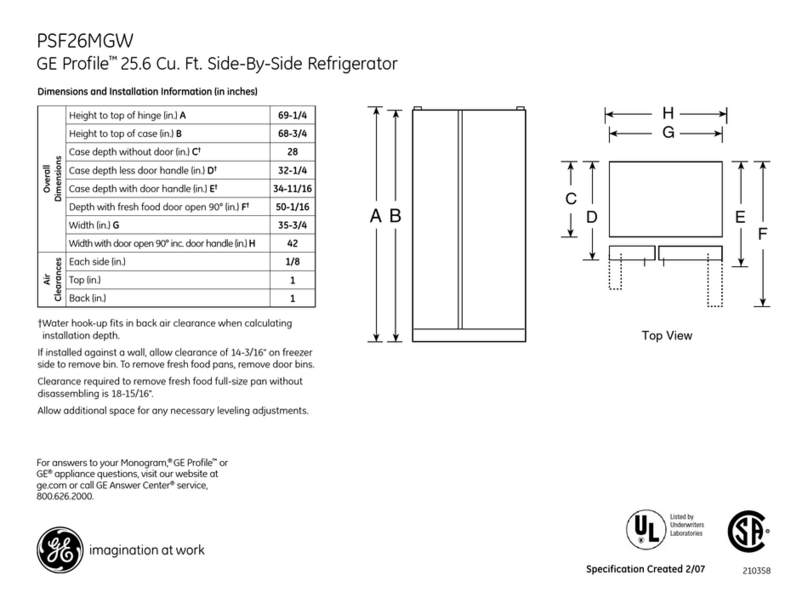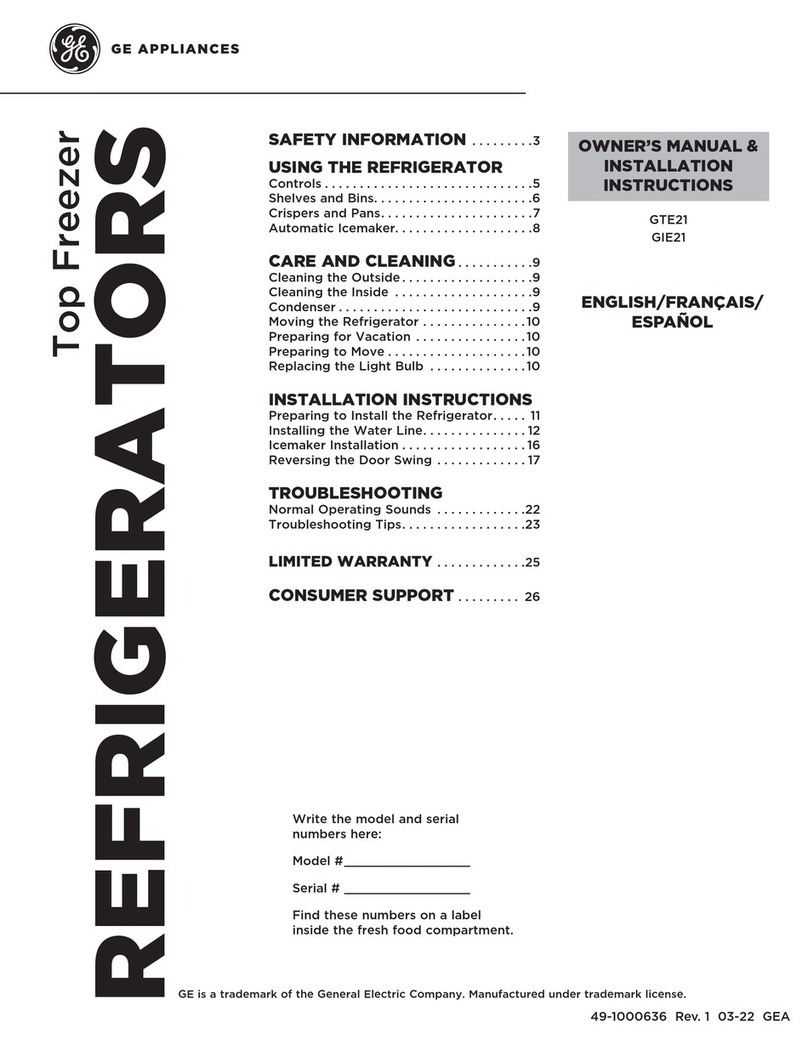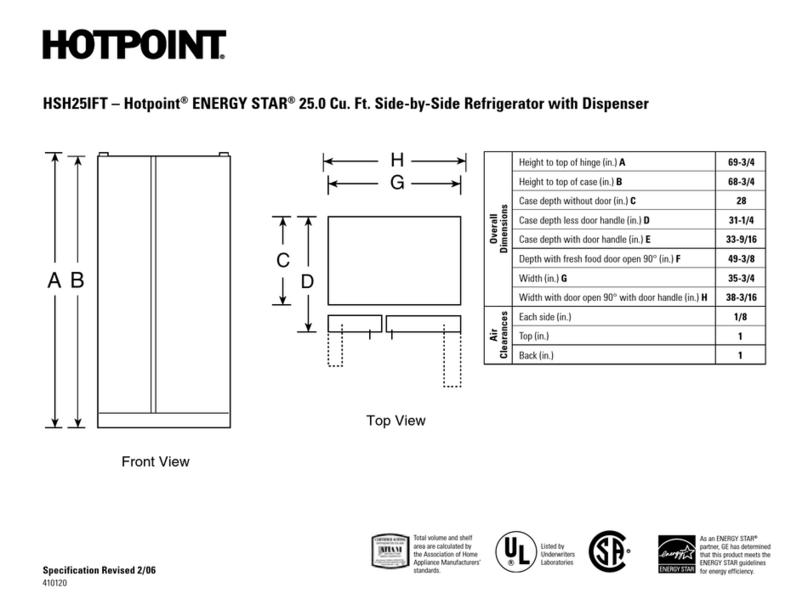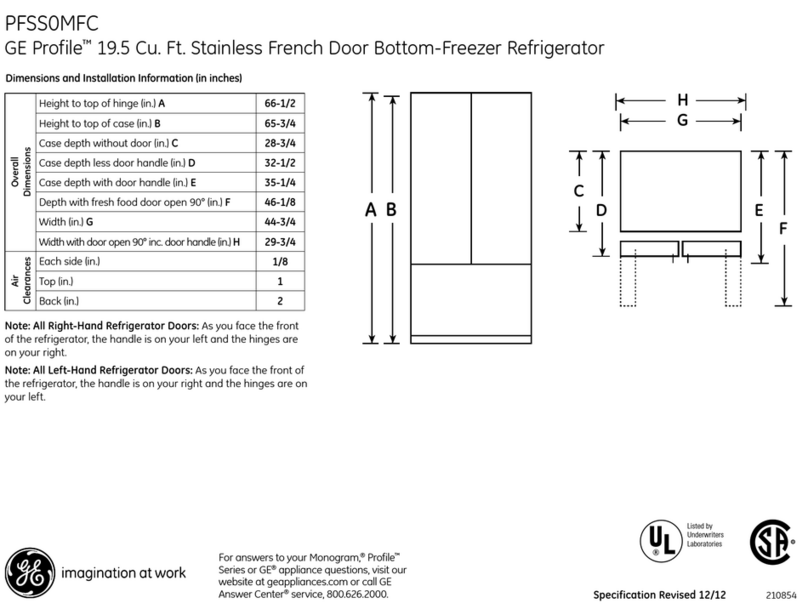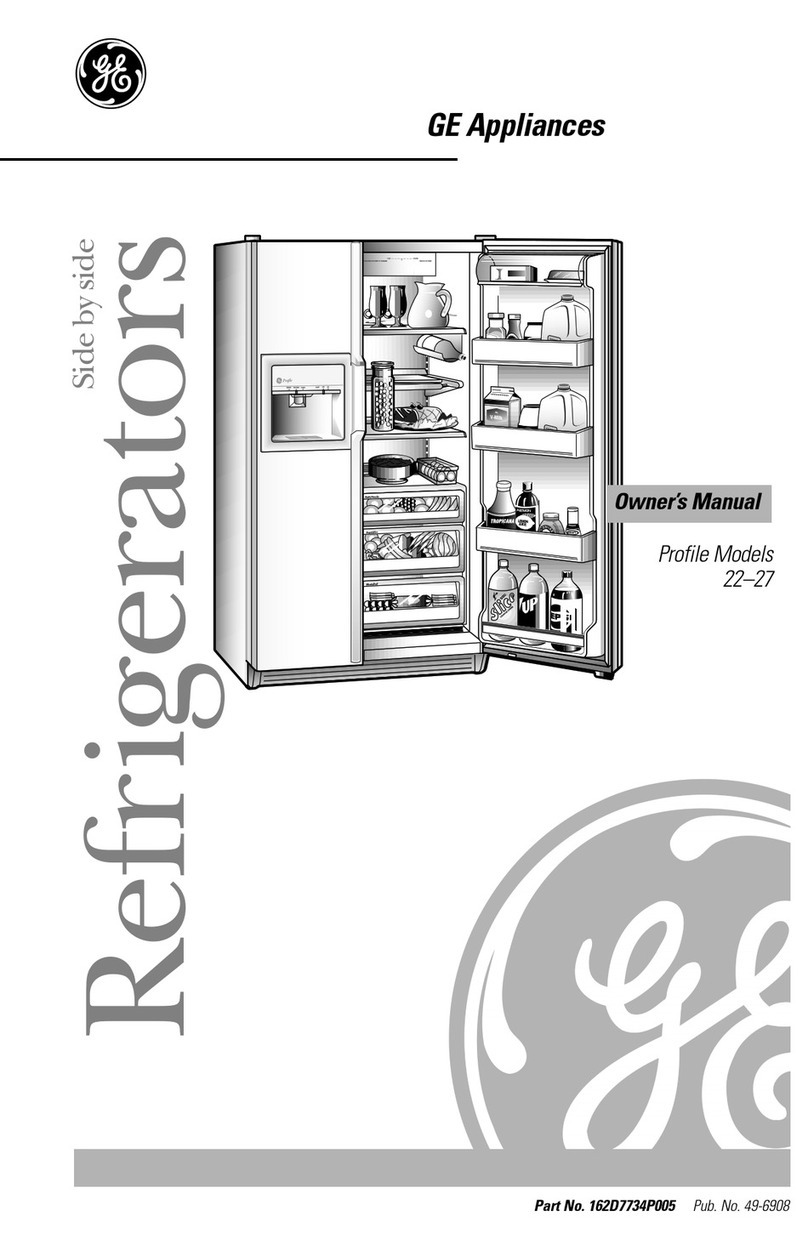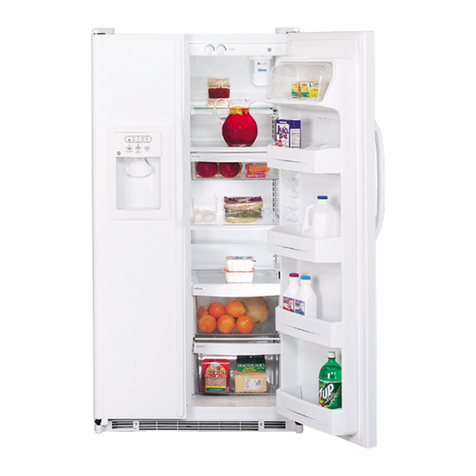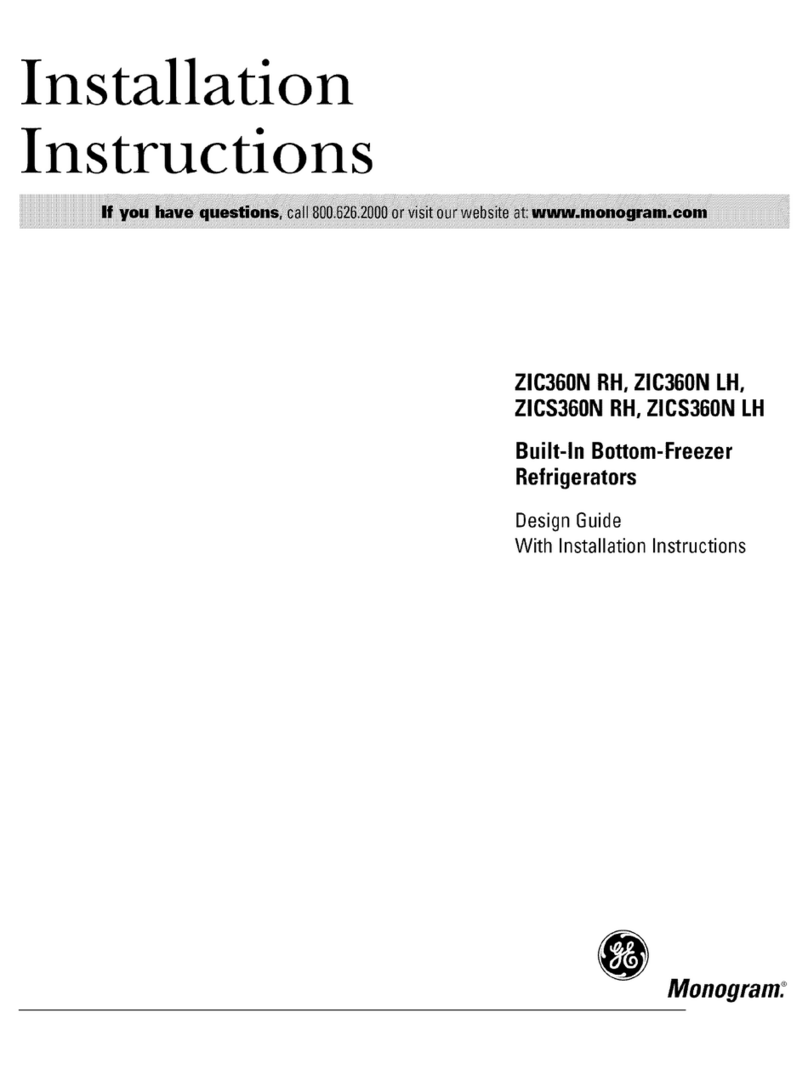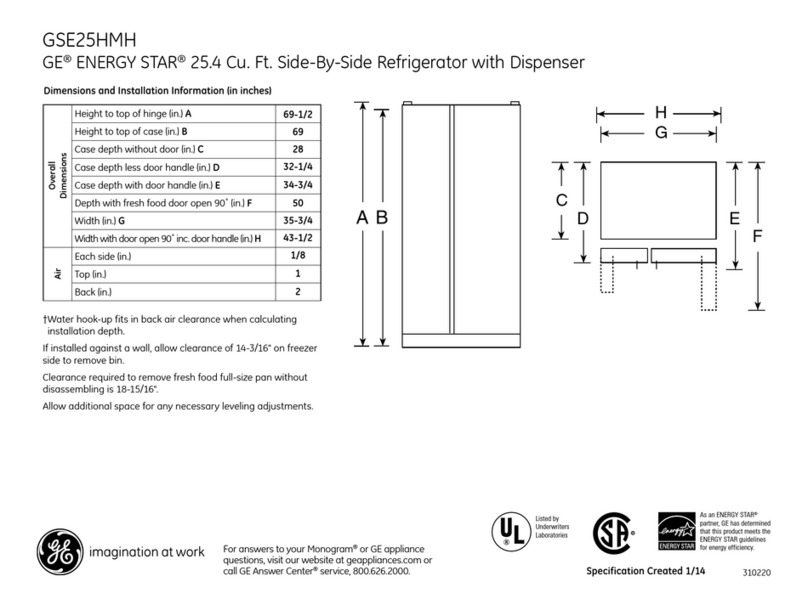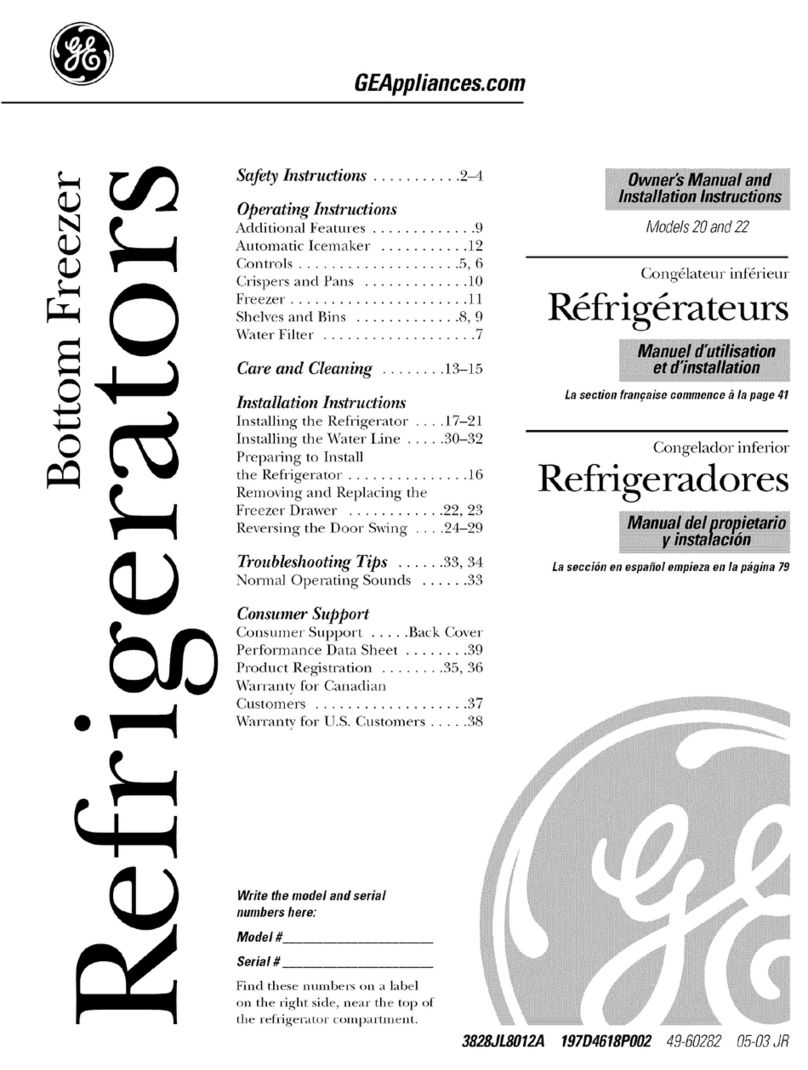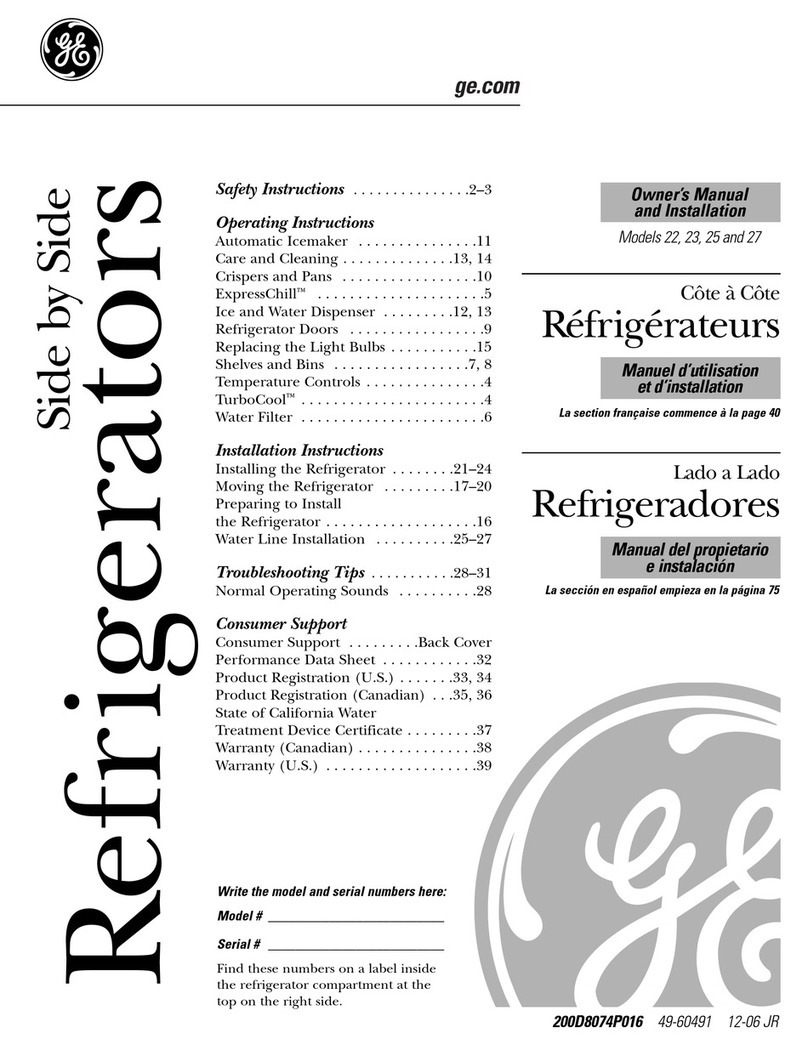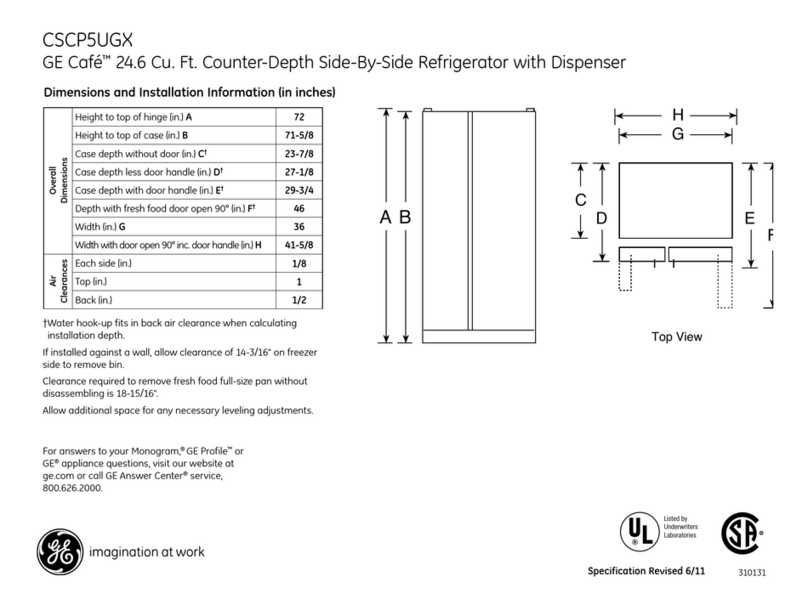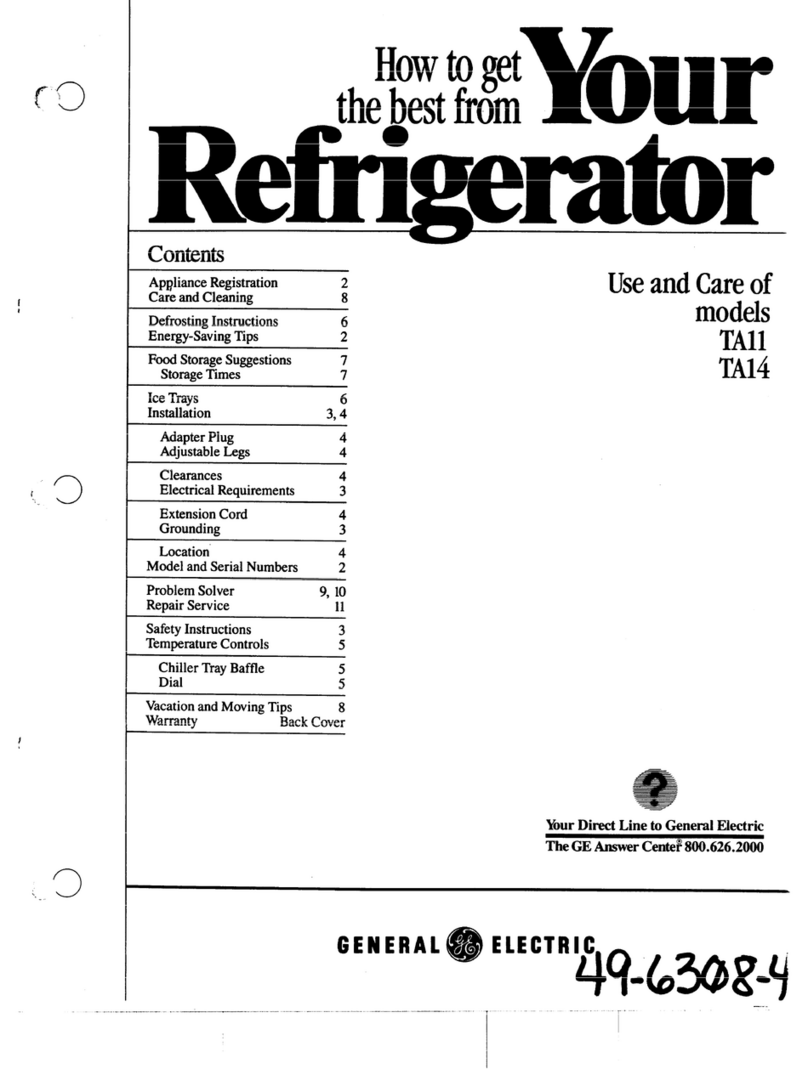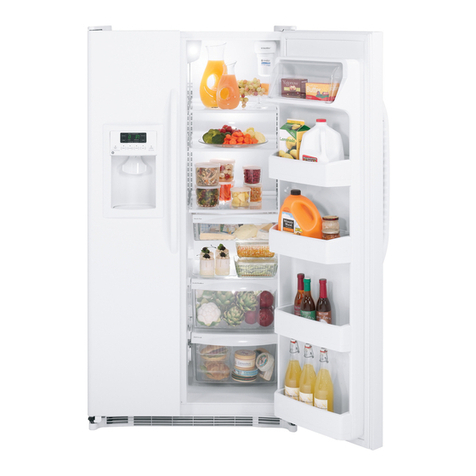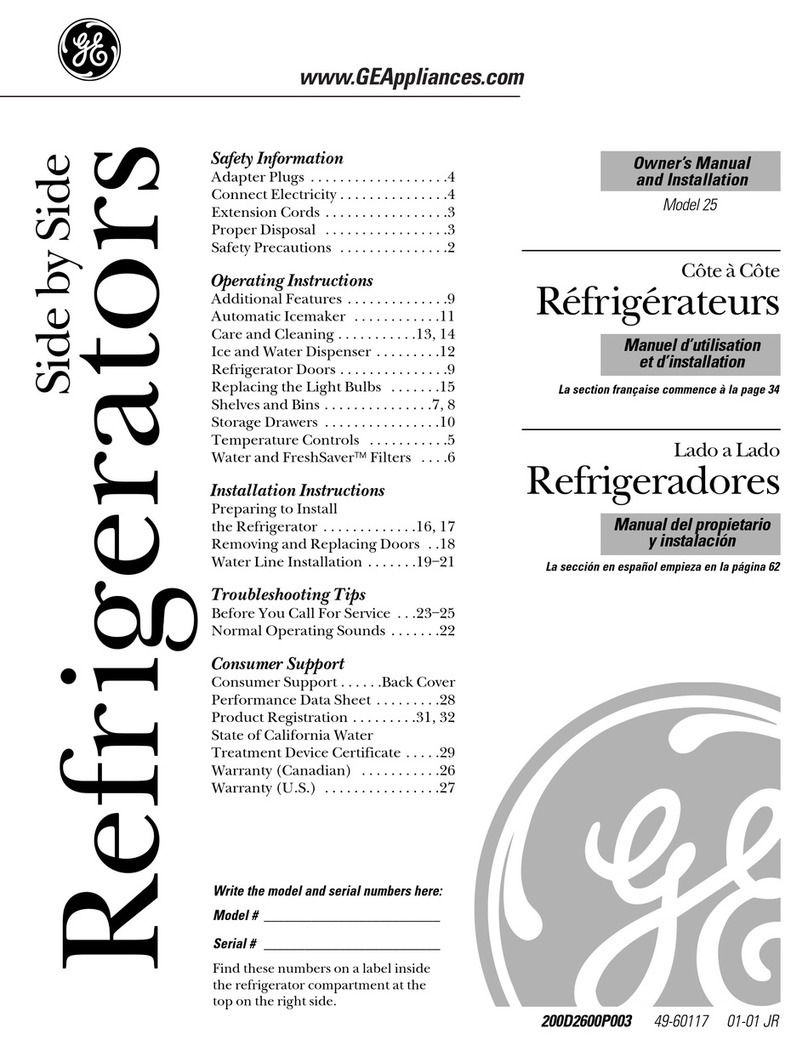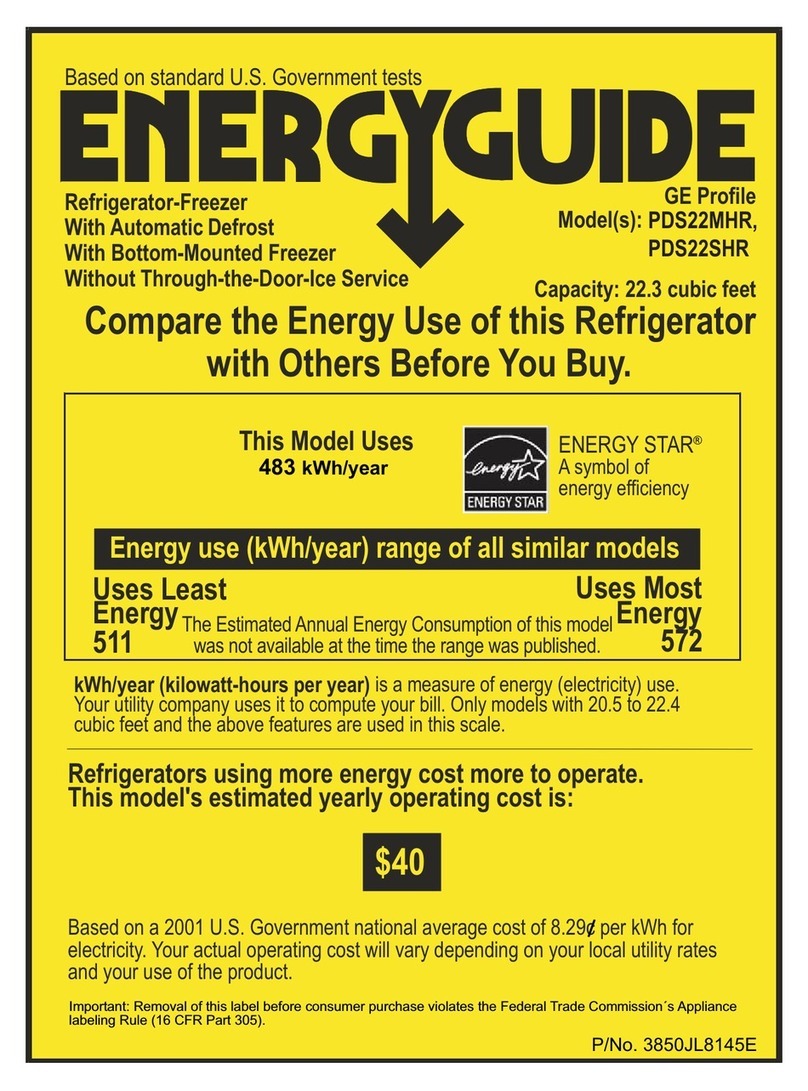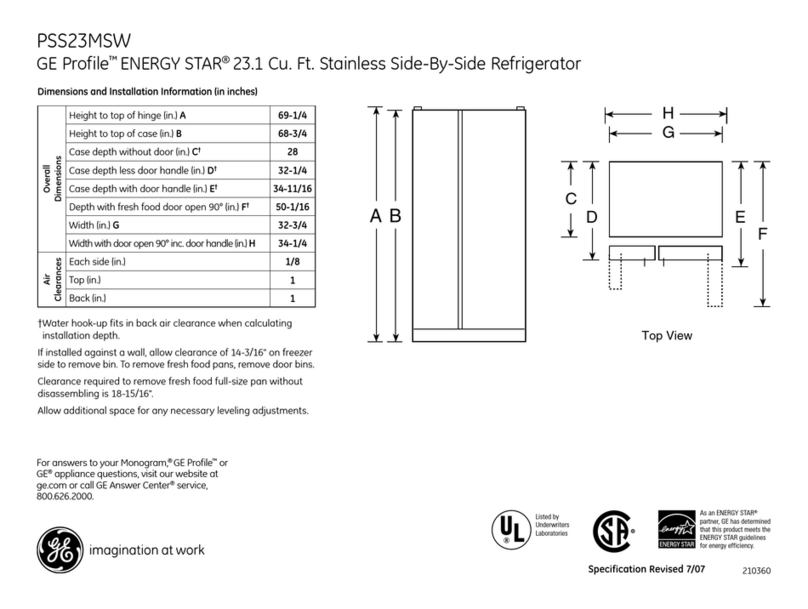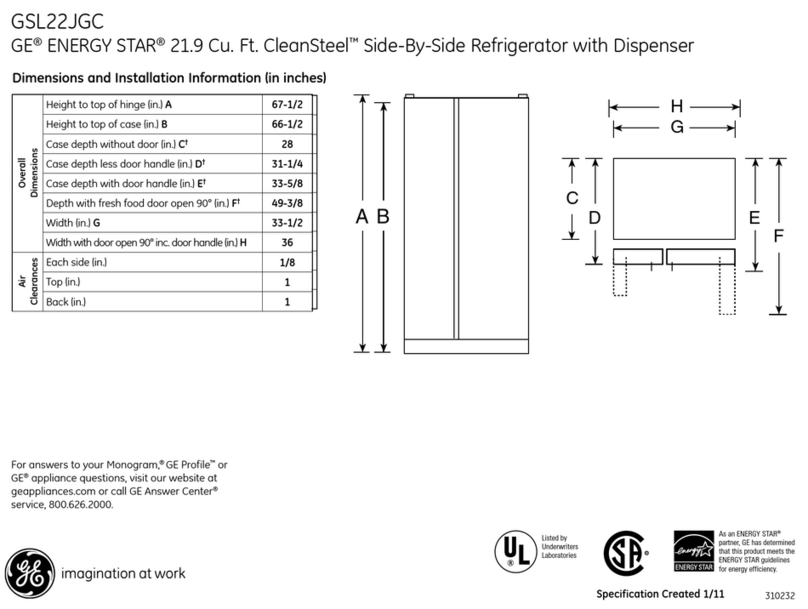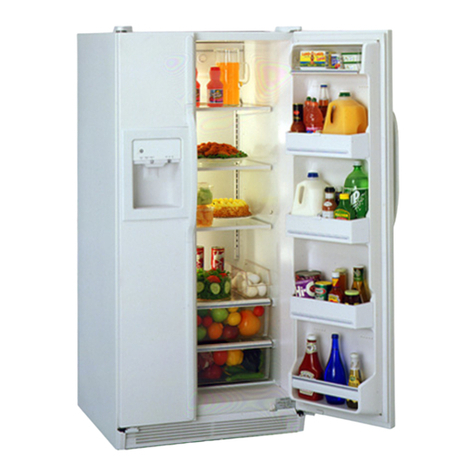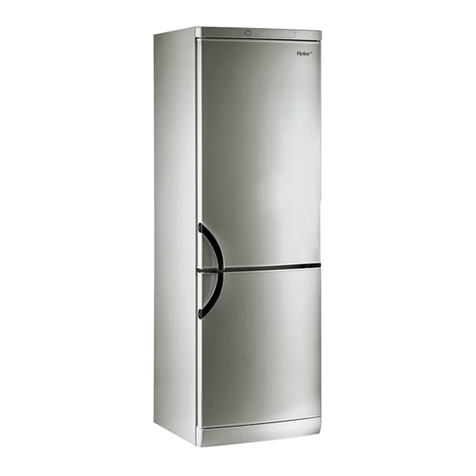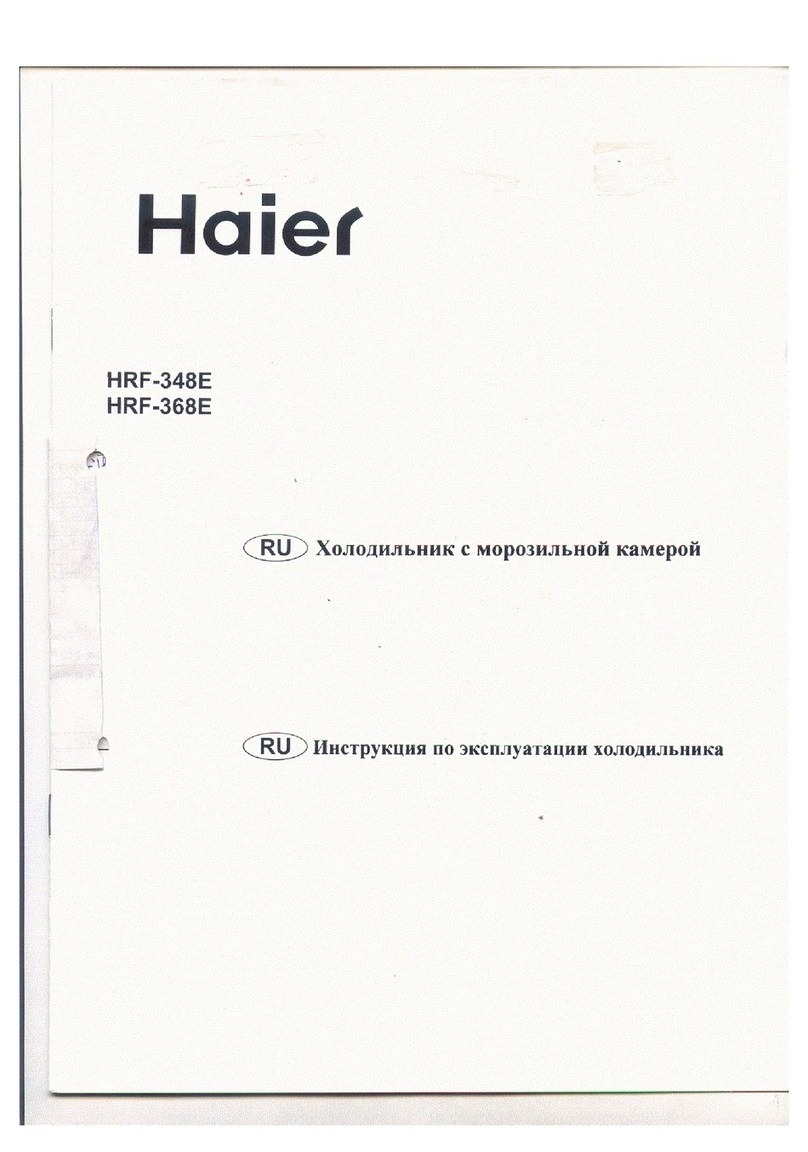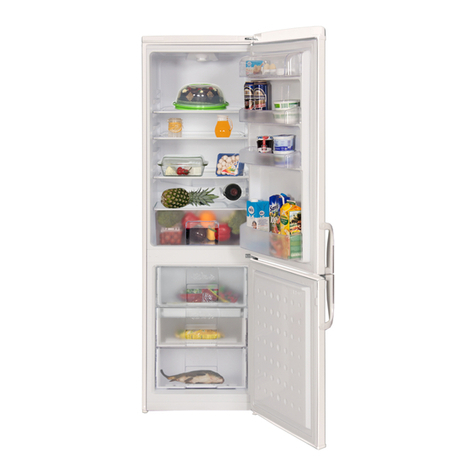Food Storage Suggestions
C-<
.
--4 Suggested storage times*
03: MONTHS
Eatirmauali~ droos REFRIGERATOR FR&!ER
afterhe shown -AT
36” :!40’%
Fresh Meats
Roasts(Beef&Lamb) ....... 3to 5
Roasts(Pork&Veal) ........ 3to5
Steaks(Beef) .............. 3t05
Chops(Lamb) ............. 3t05
Chops(Pork) . . . . . . . . . . . . . . 3t05
Ground&Stew Meats ....... lto2
VarietyMeats.............. lto2
Sausage(Pork) ............ lto2
Processed Meats
Bacon ................... 7
Frankfurters............... 7
Ham(Whole) .............. 7
Ham(Half) ................ 3t05
Ham(Slices) .............. 3
LuncheonMeats ........... 3t05
Sausage(Smoked) ......... 7
Sausage(Dry&Semi-Dry),... 14to 21
Cooked Meats
CookedMeatsand
MeatDishes ............. 3t04
Gravy&Meat Broth ......... lto2
Fresh Poultry
Chicken&Turkey(Whole) .... 1to 2
*+*- Chicken(Pieces) ........... lto2
~“
%.> “Turkey(Pieces)............. lto2
Duck&Goose (Whole)....... 1to 2
Giblets ................... lto2
Cooked Poultry
Pieces(Coveredwith Broth)... 1to 2
Pieces(NotCovered)........ 3to 4
CookedPoultryDishes....... 3to 4
FriedChicken.............. 3t04
0%
6to 12
4t08
6to 12
6t09
3t04
3t04
3t04
lto2
1
1~
lto2
lto2
lto2
Freezing
notrecom-
mended.
2t03
2t03
12
9
6
6
3
6
1
4t06
4
(Otherthanformeats& poultry) FREEZER
Mostfruitsandvegetables ............6-12 months
Leanfish ..........................6-8 months
Fattyfish,rollsandbreads,
soups,stew,casseroles .............2-3 months
Cakes,pies,sandwiches,
leftovers(cooked),
Icecream(original carton) ...........1month max.
Newtechniques are constantly being developed.
Consultthe College or County Extension Service
or your local Utility Company for the latest
information on freezing and storing foods.
●U.S.Depaflment of Agriculture
Meats, fish and poultry purchased
from the store vary in quality and
age; consequently, safe storage
time in your refrigerator will vary.
Tostore unfrozen meats, fish and
poultry:
●Always remove store wrappings.
.- ●Rewrap in foil, film or wax paper
and refrigerate immediately.
Tostore cheese, wrap well with
wax paper or aluminum foil, or put
in aplastic bag.
●Carefhlly wrap to expel air and
help prevent mold.
●Store pre-packaged cheese in its
own wrapping if you wish.
Tostore vegetables, use the
vegetabledrawers-they’ve been
designedto preservethe natural
moistureandfreshnessof produce.
●Coveringvegetableswithamoist
towelhelps maintaincrispness.
●As afbrther aid to freshness,
pre-packaged vegetables can be
stored in their original wrapping.
Note: Speck.djkshjbod compartment
drawers (on models so equipped)
make it unnecessary to wmp certain
foods which they’ve been designed
to preserve. 7%esedrawers are
described on pages 10 and 11.
Tostore ice cream-Fine-quality
ice cream, with high cream
content, will normally require
slightly lower temperatures than
more “airy” already-packaged
brands with low cream content.
●Itwillbe necessarytoexperiment to
determine the freezer compartment
location and temperature control
setting to keep your ice cream at
the right serving temperature.
●The mr ofthe *r compartment
is slightly colder than the front.
Tips on freezing foods
Themarethreeessentialrequirements
for efficient home freezing.
1. Initial quality. Freeze only top-
qualityfoods.Fxeezingretainsquality
and flavor;it cannot impmve quality.
2. Speed. The quicker fruits and
vegetables are frozen after picking,
the better the frozen product will
be. You’llsave time, too, with less
culling and sorting to do.
3. Proper packaging. Use food
wraps designed especially for
freezing; they’re readily available
at most food stores.
9
Tofreeze meat, fish and poultry,
wrapwell in freezer-weightfoil (or
otherheavy-dutywrappingmaterial)
formingitcarefbllytothe shapeof
thecontents.This expels air.Fold
andcrimpends of thepackageto
provideagood, lasting seal.
Don’trefreezemeatthathas
completelythawed;meat, whether
raworcooked, canbe frozen
successfidly only once.
Limit freezing of fresh (unfrozen)
meats or seafoods to number of
pounds at atime as follows:
TFX22R, TFXH22R,
TFX22V . . . . . . . . . . .21 pounds
TFX24R, TFXW24R,
TFX24V ...........26 pounds
Forconvenience...
●Store like things together. This
savesboth time and electricity
because you can find foods faster.
●Place the oldest items up front so
they can be used up promptly.
●Use shelves on the door for most
often used sauces and condiments.
●use the meat d~wer for mea~
you do not freeze.
Tosave money in energy
and food COStS
sPlace most perishable items, such
as milk, cream or cottage cheese,
toward the rear of the top shelf, as
they will staycoldest in this part
of the fresh food compartment.
●Cover moist foods with tight lids,
plastic film or foil.
sLeafvegetablesand fruits placed in
drawerswill last longer when stored
in closed plastic containers or
wrapped in plastic film.
●Do not overload your fresh food
or freezer compartment with alot
of warm food at one time.
●Open the door the fewest times
possible to saveelectrical energy.
●When going out of town for
severaldays, leaveas fewperishables
as possible in the refrigerator. Set
the icemaker to the “OFF” position
and shut off water to the refrigerator.
